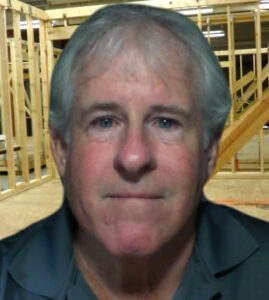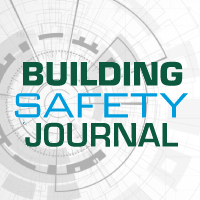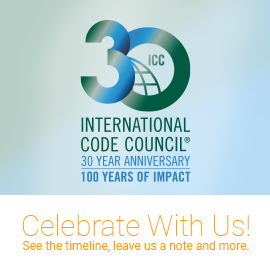
ICC Members: Shaping the safety of the world around us — David Porter

![]() Code professionals ensure building safety today, for a stronger tomorrow. As the individuals behind modern codes and standards, these professionals are responsible for ensuring the safety and compliance of codes and standards, shaping the safety of the world around us, and serve as the safety foundation for our buildings. They don’t just ensure that buildings are constructed to withstand the stress of everyday use, they are behind the security and stability of every building. They specialize in preventative measures to help communities weather unforeseen natural disasters and ensure that first responders have less to worry about and can do their jobs safely. Code professionals are an essential piece in the building and construction puzzle and are engaged in the building process from the initial building plan to the finished product.
Code professionals ensure building safety today, for a stronger tomorrow. As the individuals behind modern codes and standards, these professionals are responsible for ensuring the safety and compliance of codes and standards, shaping the safety of the world around us, and serve as the safety foundation for our buildings. They don’t just ensure that buildings are constructed to withstand the stress of everyday use, they are behind the security and stability of every building. They specialize in preventative measures to help communities weather unforeseen natural disasters and ensure that first responders have less to worry about and can do their jobs safely. Code professionals are an essential piece in the building and construction puzzle and are engaged in the building process from the initial building plan to the finished product.
The International Code Council is a member-focused association with over 64,000 members dedicated to developing model codes and standards used in the design, build and compliance process to construct safe, sustainable, affordable and resilient structures. They protect the public through their commitment to building safety; enforce code compliance to empower and educate stakeholders across the built environment to embrace and integrate safety standards in their work; support economic development by making our buildings sturdier, and therefore longer lasting. Their knowledge, skills, and abilities impact every building, in every community.
The Code Council recognizes the importance of continuing to grow awareness of the important work that code professionals do and the impact they have, in the hopes of encouraging aspiring building safety professionals to join in on the building safety movement. In this exclusive feature for the Building Safety Journal, we asked David Porter to share his experience in the industry, highlights of his professional career, and any insights or advice he has concerning the industry and the future of building safety.
David Porter
President
David Porter Associates – Architects. Inc.
Palm Beach Gardens, Florida, United States
International Code Council member for 17 years
BSJ: What was the path to your career — how and why did you pursue a profession in building safety?
Porter: I am an architect. I have followed that path since I was in sixth grade, drawing the house plans my parents would build in their home building business. I worked with them in the construction business since age five up through my completion of college. As a licensed architect, I continued preparing their house plans but with my own architectural seal. With this background, I have been involved with building codes and building safety since a very early age. Codes and rules are what make the United States a safer place for the built environment than exists in many other countries. Whenever I have traveled abroad, my eye picks up on “code violations” and I have to remind myself that such violations would be under the codes we comply with in the U.S. and that are invaluable to protecting the health, safety, and welfare of the public but that are not mandated in other places.
BSJ: What three things do you need to be successful in this industry and in your profession?
Porter: Construction experience, human factors experience and knowledge of building and life safety codes.
BSJ: What role have mentors, advisors or your network played in your career?
Porter: They show, by example, how to do things the right way and the wrong way. I have learned as much from those in each category throughout my career. One can learn as much from knowing how something should NOT be done as to how something should be correctly done.
BSJ: What led you to become an ICC member?
Porter: Wanting to extend and offer my experience and background to the continual improvements and interpretation of the codes that govern our built environment.
BSJ: Are you involved in any ICC committees or councils? Do you have any ICC certifications?
Porter: Building Code Interpretation Committee and the IRC Interpretation Committee.
BSJ: How long have you been in the industry?
Porter: 60 years.
BSJ: What major changes have you seen?
Porter: Phenomenal. I started in the industry before the computer was anything other than a giant room that required keypunch cards. Cell phones didn’t exist. The internet and email wasn’t even an idea yet. Drawings were printed on an ammonia machine on sensitized paper (that killed every architect’s ability to smell any longer). Construction procedures were archaic compared to how we can build things today. Showing designs in 3D required the use of pencil, triangles, straight edges, and the 3-point perspective drawing method. Any changes to the design would require doing the drawing process all over again. Changes to construction drawings required erasing vellum or mylar and if changes to one area happened more than once, there would be holes in the original drawings. The few clicks of a mouse and keyboard to wipe out some lines on the computer screen, create the changes, and making a new PDF to immediately email to the client, contractor, or consultants was a pipe dream. Working on drawings happened only in the architect’s office or when those original drawings were taken home to be worked on. No simultaneous remote working on the drawings by multiple parties and storing them in “the cloud” to grab from any place with cell service or wifi. Measuring up an existing building is no longer a laborious and mistake-prone process of a tape measure, clipboard, pens, and camera to hopefully, correctly document the existing conditions, it is now a laser survey that plots out millions of points to then create an existing 3D model with accurate dimensions and capturing all existing details. As I said, phenomenal changes since the 1960s until now.
BSJ: What excites you about the future of your industry?
Porter: The changes in the next 60 years might bring about. When I reflect on the changes in architecture, construction, engineering, materials fabrication, codes, and project delivery, it is mesmerizing and mind-boggling as to what changes might or will happen in the next 60 years. I can see drawings becoming holograms where clients and contractors can stand inside the hologram to experience the building, structure, wiring, piping, and ductwork. And, like computers not existing when I started in architecture and construction, who knows what does not exist today that might transform everything that exists in the future.
BSJ: What is one piece of advice that you would give to those starting out in the industry?
Porter: Get hands-on construction experience. I teach architecture and construction to a high school construction training program that I co-founded. My first talk with the students is to get hands-on construction experience, somehow. Even if that means taking a lawn chair and sitting in front of a construction site to watch how construction happens. As noted in my life’s experience, it is my great fortune to have grown up in a home building family that provided me with construction reality knowledge that has made my entire 40-year architecture career. Any job I ever applied for, before having my own firm (1981), I was offered that job on the spot because I knew the realities of construction and materials. If you haven’t poured concrete or hammered nails or hauled concrete blocks around on a job site, you won’t know how those materials go together or don’t go together. With the high school construction training program, every graduating senior who wants a job in construction has had a bidding war among contractors to hire them the day they walk across the stage to get their diploma. In my opinion, it is the biggest, lacking experience point for all architects and engineers who then design buildings that contractors just snicker at, knowing that they cannot build the design as envisioned. My construction background even had job offers from architects on my presentation juries during architecture school because my wall sections were immediately buildable. If I controlled the architectural licensing laws, I would incorporate a requirement for applicants to have a minimum of one-year construction experience.
BSJ: What do you see as most surprising about the work that you do?
Porter: I wanted to become an architect because even back when I was drawing the house plans on the kitchen table in 6th grade, I was enthralled that what I was drawing and helping to build would be a house to become a home for a family. That feeling is what still fuels my interest and work ethic today, some 55 years since I drew that first set of house drawings.
BSJ: What would you like to do next in your professional/personal life?
Porter: Same thing I am doing now. I work seven days a week because I still love what I do and think of it as a paid hobby. I have never had the urge to bag it all and start doing something different. As I tell the high school students, if you dislike getting up Monday morning to head to work, you need to pick out a different career that will make you jump out of bed on Mondays to want to get to work. Life is too short to work in a career just to pay the bills. Fulfillment of the mind is just as important as paying the bills.
BSJ: What do you enjoy doing in your leisure time?
Porter: Swimming, exercising and golf.
If someone wrote a biography about you, what do you think the title would be?
Porter: Love what you do and you will be good at it.
There’s a world of opportunity in being a member of the International Code Council. Membership provides the tools to get the most out of each workday: from discounts on essential International Codes and other publications to the best prices on top-quality training and ICC certification renewals, Code Council membership helps budgets go further. Exclusive member benefits include code advice from expert technical staff as well as access to member-exclusive news and articles at the Building Safety Journal news portal. Plus, only Code Council members vote in the ICC code development process. An online Career Center allows job postings and searches for new job opportunities — all at no additional charge.
The Code Council offers numerous councils, committees, and resources to help code professionals grow and network with colleagues. Six discipline-specific Membership Councils offer members a place to come together and be a more powerful force in shaping your association, your industry, your career, and your future. Code Development Committees are an instrumental part of the ICC code development process and are responsible for the review and evaluation of code change proposals submitted to the International Codes. Professional Development Committees serve to better align the ICC education programs and certification programs to ensure that quality training is available to meet the needs of all members, customers and certification holders. Finally, the Value of the Code Official toolkit helps members to heighten awareness of the importance of code officials to their communities and to highlight the code official’s role as a helpful advocate for community safety, health and welfare, and economic development.
To learn more about ICC membership, click here, or contact ICC Member Services by email or 888-ICC-SAFE (888-422-7233) ext. 33804.





